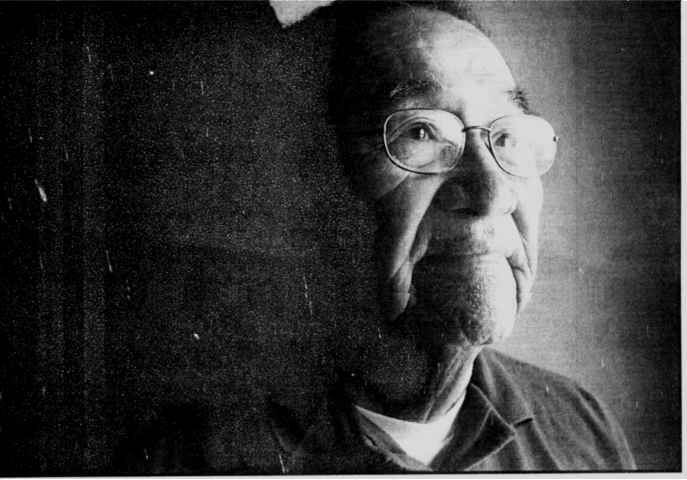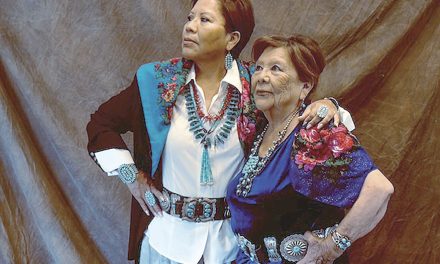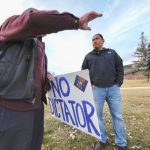
50 years ago: Billison promotes Times as tool for education

Sam Billison
We have been talking a lot about in recent weeks about the mudslinging by the two main candidates in the 1966 primary — the tribe’s then-chairman, Raymond Nakai and Sam Billiison, a respected education leader of the tribe.
Now the Times may have been secretly supporting Billison because not only was he a great deal easier to interview, he didn’t put pressure on the paper to help his campaign as Nakai did.
But another reason was that Billison was one of the biggest supporters of the paper from the first issue it printed some seven years before.
In 1959, Billison made a number of speeches supporting the creation of a tribal newspaper, not because it would provide the members of the tribe more news about their government, but because he viewed the paper as a major factor in improving the ability of the average Navajo to read and write.
In Billison’s opinion, Navajos did not, as a rule, read for pleasure. The number of Navajos who read novels for pleasure, he said, could be counted using one’s fingers. He thought the creation of a tribal newspaper would change that.
And to some degree, he may have been right. But the staff of the paper in the 1960s was more interested in getting the news than it was in making sure that it was written in a way that would allow Navajos with limited English ability to get the news firsthand without it being diluted by translators.
When the Times diverted from a newsletter in its second year in existence to becoming a tabloid, there was a lot of discussion about what grade level the stories would be written for.
This is a question that journalists for papers in the border communities would discuss whenever they got a free moment.
Billison strongly urged teachers to make use of the papers and worked out a deal with the paper to make sure all of their students became better known.
Helping motivate older Navajos who may have dropped out of school in the sixth or seventh grade to read the paper was a key factor in the paper’s decision throughout most of the 60s to rely more on photos than the average off-reservation paper.
Anyone looking at a Navajo Times in 1966 would see that it had evolved. There weren’t as many photos and the writing was getting a little — but not a lot —better.
The paper was still relying, because of lack of staff, more on articles and press releases that were turned in and usually ran the information word for word with little or no editing so the writing styles in each paper or even on a page varied widely.
The paper was still not available in some of the remote parts of the reservation because of the cost to transport it there.
But Nakai is credited with coming up with the solution of how to get the paper to all the chapters when he remarked how easy and inexpensive it was to mail the paper.
Billison said he believed that the lowest level of the paper had a lot to teach someone who may have a hard time learning to write English and math.
If he was elected chairman, he said, he would provide copies of the Gallup Independent to all the chapters at little or no cost. His goal, he said, was to bring the Navajo Times up to snuff and then let the tribal members make the decision between it and the Independent.
And this lofty goal was being met, according to Navajo Times promotional papers. And at the same time, the paper wasn’t losing as much money as it was in the early years of the decade, so that was a plus.
Paul Jones, the former tribal chairman, had decided to run again but this time he was finding it harder to relate to the problems faced by the average police officer.
His campaign was now in full swing and he promoted a platform saying he was the only candidate running in that election who would be able to unite both factions and bring unity to the tribe.
According to statements they made to their supporters by all three candidates, they were campaigning on the cheap with no campaign expected to spend more than $10,000 total to get elected.
That would change four years later when Peter MacDonald entered the picture and started raising an obscene amount of contributions.
To read the full article, pick up your copy of the Navajo Times at your nearest newsstand Thursday mornings!
Are you a digital subscriber? Read the most recent three weeks of stories by logging in to your online account.








 Highway 264,
Highway 264, I-40, WB @ Winslow
I-40, WB @ Winslow